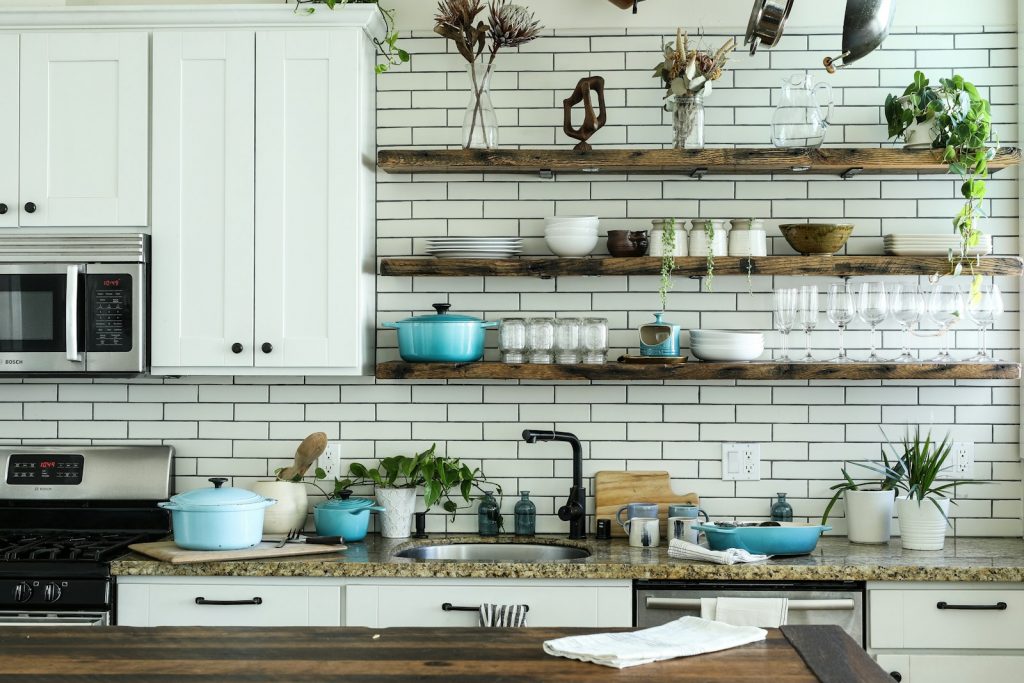How can you store produce without plastic and keep it fresh in an eco friendly kitchen?
Storing produce without plastic is a cornerstone of a sustainable, eco friendly kitchen. By choosing plastic free produce storage methods—like cloth produce bags, glass jars, beeswax wraps, and stainless steel containers—you can keep fruits and vegetables fresher for longer, reduce food waste, and eliminate harmful single-use plastics from your daily routine. These sustainable vegetable storage solutions not only benefit the environment but also protect your family from the toxins found in many plastics, making your kitchen healthier and greener.[2][3][5][7][8]
5 Essential Entities for Plastic Free Produce Storage
- Cloth Produce Bags: Breathable cotton or linen bags keep veggies crisp and allow air circulation, which helps prevent mold and spoilage.[2][5][7]
- Glass Jars and Containers: Perfect for storing cut fruits, veggies, and herbs in the fridge, keeping them visible and fresh without leaching chemicals.[2][3][5][8]
- Beeswax Wraps: Reusable, moldable wraps made from cotton and beeswax that replace plastic wrap for covering produce, cheese, and leftovers.[3][5][7]
- Stainless Steel Containers: Durable, non-toxic, and ideal for storing leftovers or taking snacks on the go.[3][5][8]
- Vejibags: Moist cotton bags specifically designed to keep leafy greens and vegetables fresh for up to two weeks by maintaining humidity.[7]
Top 10 Questions About Storing Produce Without Plastic
- Why should I avoid plastic when storing produce?
Plastic can leach harmful chemicals into food, contributes to environmental pollution, and often doesn’t allow produce to breathe, leading to faster spoilage.[3][5][8] - What are the best alternatives to plastic bags for produce?
Cloth produce bags, beeswax wraps, glass jars, stainless steel containers, and Vejibags are all excellent options for plastic free produce storage.[2][3][5][7] - How do I keep leafy greens fresh without plastic?
Store washed greens in a damp cotton bag (like a Vejibag) or wrap them in a damp tea towel before placing them in the fridge’s crisper drawer.[2][7] - Can I store cut fruits and vegetables without plastic?
Yes! Use glass jars or containers to keep cut produce fresh and visible. Beeswax wraps also work well for covering cut fruits and veggies.[2][3][5][8] - How do I keep produce fresh at room temperature?
Store hardy fruits and vegetables like onions, potatoes, and squash in a cool, dry place in open baskets or cloth bags. Most fruits and many vegetables can be kept at room temperature for a few days if consumed quickly.[2][5] - How do beeswax wraps work for produce storage?
Beeswax wraps mold around food or containers using the warmth of your hands, creating a breathable, protective seal that keeps produce fresh.[3][5][7] - Are silicone bags a good plastic free option?
Yes, high-quality silicone bags are reusable, durable, and suitable for storing snacks, cut veggies, and even freezer storage.[3][7] - Can I freeze produce without plastic?
Absolutely. Use glass containers, stainless steel boxes, or reusable silicone bags to freeze fruits, vegetables, and herbs.[3][5][7] - How do I store root vegetables sustainably?
Remove greens from carrots, beets, and radishes, then store the roots in a cloth bag or loose in the crisper drawer. The greens can be stored separately and used quickly.[2] - What’s the best way to organize an eco friendly food storage kitchen?
Upcycle glass jars for dry goods, use stackable stainless steel containers for leftovers, and keep cloth bags handy for shopping and storage. Label containers for easy access and to reduce food waste.[3][6][8]
Plastic Free Produce Storage: Methods and Tips
Making the switch to storing produce without plastic is easier than you might think. Here are some of the most effective and eco friendly food storage kitchen strategies:
- Cloth Produce Bags: Use cotton or linen bags for storing vegetables in the fridge or pantry. They allow produce to breathe, reducing mold and excess moisture. For carrots and root veggies, remove the tops and store in a cloth bag in the crisper drawer.[2][5][7]
- Glass Jars and Containers: Store cut fruits, chopped veggies, and herbs in glass jars. Glass keeps food visible, airtight, and free from plastic chemicals. They’re also great for leftovers and meal prep.[2][3][5][8]
- Beeswax Wraps: Replace cling film with beeswax wraps for covering produce, cheese, and bowls. Simply warm the wrap with your hands to seal it around food or containers.[3][5][7]
- Stainless Steel Containers: Perfect for storing snacks, chopped veggies, and even freezing produce. Stainless steel is durable, non-toxic, and easy to clean.[3][5][8]
- Vejibags: Dampen the bag, place washed greens or veggies inside, and store in the fridge. The humid environment keeps produce crisp for up to two weeks.[7]
- Upcycle Old Jars: Rinse and reuse glass jars from sauces or jams to store grains, beans, and even fresh herbs in water.[6]
- Buy in Bulk and Avoid Plastic Packaging: Shop at farmers’ markets or bulk stores with your own bags and containers to cut down on packaging waste.[3][6]
Tips to Keep Produce Fresh Without Plastic
- Store leafy greens in damp cloth bags or towels in the crisper drawer for extended freshness.[2][7]
- Keep cut veggies and fruits in airtight glass containers to prevent dehydration and spoilage.[2][3][5][8]
- Wrap half-used onions, avocados, or citrus in beeswax wraps and refrigerate.
- Use open baskets or bowls for potatoes, onions, and garlic—keep them in a cool, dark place.
- Freeze excess produce in glass or silicone containers to avoid waste.
- Label containers and bags to track freshness and reduce food waste.[3][6][8]
Conclusion
Storing produce without plastic is a simple yet powerful way to make your kitchen greener and your food fresher. By switching to cloth bags, glass jars, beeswax wraps, and stainless steel containers, you’ll keep produce crisp, reduce food waste, and eliminate single-use plastics from your routine. These sustainable vegetable storage habits protect your health, save money, and help the planet. For more eco friendly kitchen tips, check out our Ultimate Guide to an Eco-Friendly Kitchen and discover 15 Easy Eco-Friendly Kitchen Swaps for even more inspiration.
Related Articles
- The Ultimate Guide to an Eco-Friendly Kitchen (for Beginners & Families)
- 15 Easy Eco-Friendly Kitchen Swaps to Reduce Waste Today
- A Beginner’s Guide to Composting Kitchen Scraps (Even in Small Spaces)
- The Ultimate Guide to Zero Waste Dishwashing
- DIY Natural Kitchen Cleaners: Effective & Eco-Friendly Recipes
- Smart Meal Planning: How to Stop Food Waste in Your Kitchen
Sources
- How to Store Produce Without Plastic – Zero-Waste Chef
- How To Have a Plastic-Free Kitchen: A Sustainable Guide
- How To Store Food Without Plastic
- Your Zero Waste Kitchen: 10 Easy Tips For A Plastic-Free Pantry
- 7 Plastic-Free Food Storage Containers For Low-Impact Leftovers
- Plastic-Free Food Storage – Eco-Friendly Solutions


